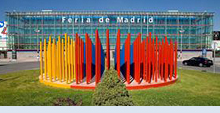 |
European Planetary Science Congress 2012
IFEMA-Feria de Madrid
23 – 28 September 2012, Madrid, Spain |
 |
|
LF1 Earth analogues as natural field facilities for astrobiology and space science |
| Convener: Felipe Gómez |
|
Oral Program
/ Mon, 24 Sep, 14:30–16:00
/ Room Venus
Poster Program
/ Attendance Tue, 25 Sep, 18:15–19:45
/ Poster Area
|
Extreme ecosystems have recently attracted considerable interest, not only because they prove that life is robust and adaptable, but also because their existence increases the probability of finding life elsewhere in the universe. Most of the best-characterised extreme habitats on Earth correspond to geophysical constraints (temperature, ionic strength, radiation, or pressure), to which opportunistic microorganisms have adapted. However, some extreme environments are unique in that they are the product of biological activity. Mars habitability studies can gain a tremendous push forward just understanding life conditions in terrestrial Mars analogues.Since first astrobiological Mars missions a strong debate exists about Mars or Europa moon habitability and the possible existence on life in these planetary bodies. Future missions will need automated tools for astrobiological in situ studies. Big challenge will suppose the development of automated life detection systems. Best places on Earth for testing these missions instrumental are extreme environments, specially Mars or Europa analogues terrestrial environments. In this session we aim to bring together scientists from diverse disciplines such as engineers, geochemist, extreme ecosystems microbiologist or planetary scientist for discussing about life in extreme ecosystems and development of new tools for future space missions.

